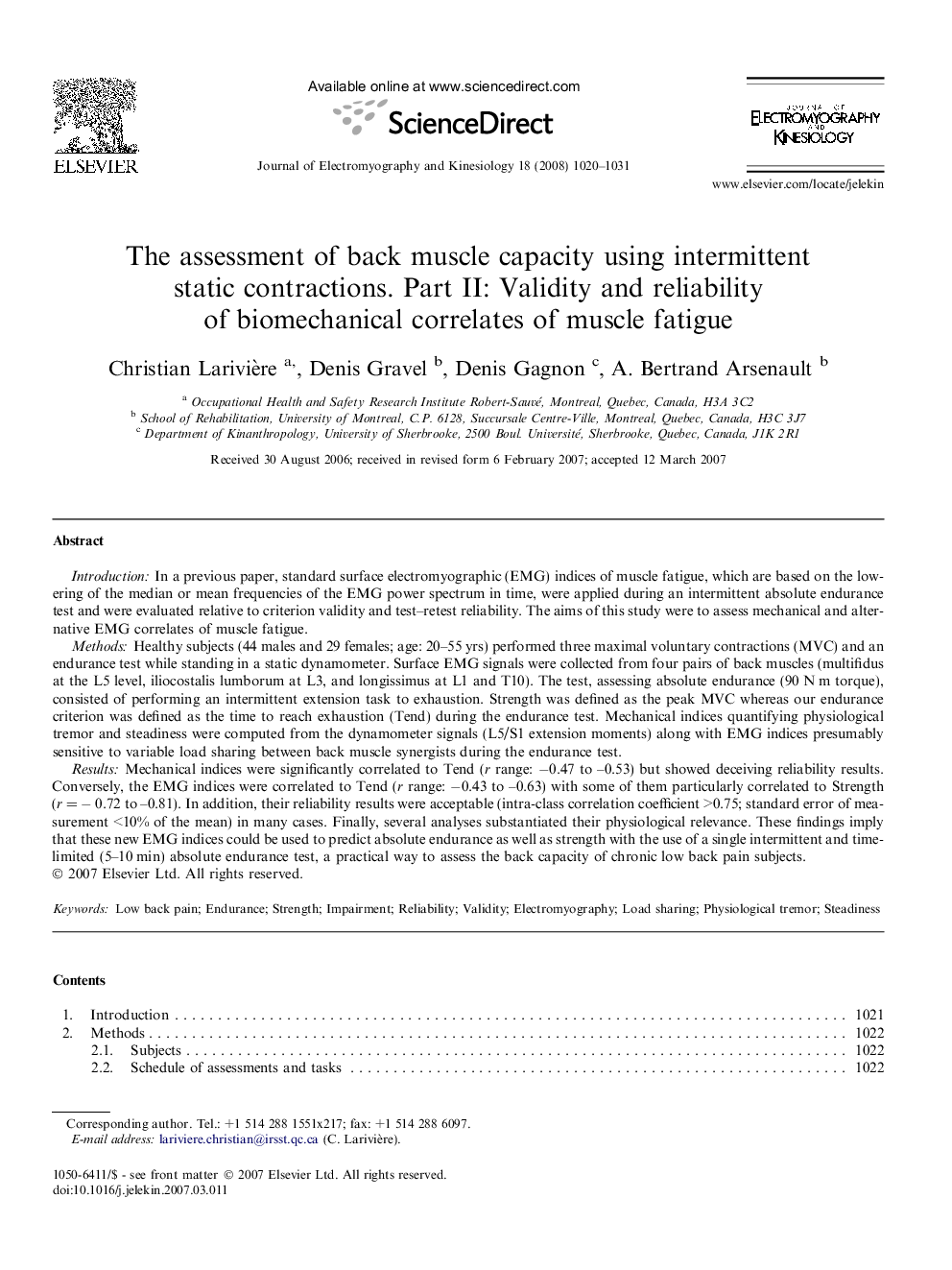| Article ID | Journal | Published Year | Pages | File Type |
|---|---|---|---|---|
| 4065657 | Journal of Electromyography and Kinesiology | 2008 | 12 Pages |
IntroductionIn a previous paper, standard surface electromyographic (EMG) indices of muscle fatigue, which are based on the lowering of the median or mean frequencies of the EMG power spectrum in time, were applied during an intermittent absolute endurance test and were evaluated relative to criterion validity and test–retest reliability. The aims of this study were to assess mechanical and alternative EMG correlates of muscle fatigue.MethodsHealthy subjects (44 males and 29 females; age: 20–55 yrs) performed three maximal voluntary contractions (MVC) and an endurance test while standing in a static dynamometer. Surface EMG signals were collected from four pairs of back muscles (multifidus at the L5 level, iliocostalis lumborum at L3, and longissimus at L1 and T10). The test, assessing absolute endurance (90 N m torque), consisted of performing an intermittent extension task to exhaustion. Strength was defined as the peak MVC whereas our endurance criterion was defined as the time to reach exhaustion (Tend) during the endurance test. Mechanical indices quantifying physiological tremor and steadiness were computed from the dynamometer signals (L5/S1 extension moments) along with EMG indices presumably sensitive to variable load sharing between back muscle synergists during the endurance test.ResultsMechanical indices were significantly correlated to Tend (r range: −0.47 to –0.53) but showed deceiving reliability results. Conversely, the EMG indices were correlated to Tend (r range: −0.43 to –0.63) with some of them particularly correlated to Strength (r = − 0.72 to –0.81). In addition, their reliability results were acceptable (intra-class correlation coefficient >0.75; standard error of measurement <10% of the mean) in many cases. Finally, several analyses substantiated their physiological relevance. These findings imply that these new EMG indices could be used to predict absolute endurance as well as strength with the use of a single intermittent and time-limited (5–10 min) absolute endurance test, a practical way to assess the back capacity of chronic low back pain subjects.
